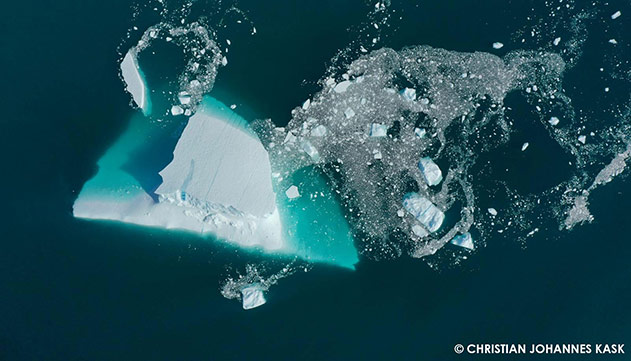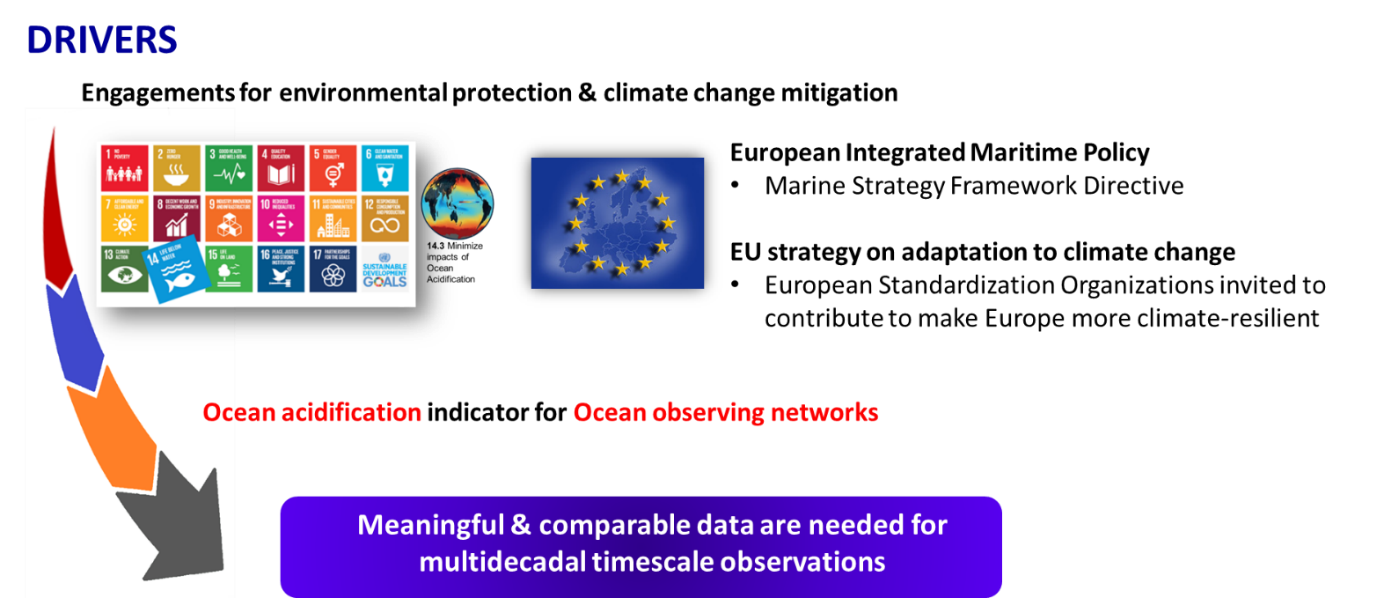
Metrology for standardised seawater pHT measurements in support of international and European climate strategies

A LNE Joint Research Project


The on-going uptake by the ocean of anthropogenic atmospheric CO2 is resulting in a decrease in pH, a process termed ocean acidification. This phenomenon is taking place in parallel to climate change, which causes enhanced ocean temperatures and water column stratification, and is also a consequence of increased anthropogenic greenhouse gas emissions.
Ocean acidification can provoke substantial changes in ocean chemistry i.e. carbonate chemistry and ecosystems. Ocean acidification has also negative effects on many societal and economical issues. As an example, according to recent publications, higher levels of ocean acidity will lead to disruptions to the oceanic carbon cycle, which is estimated to cost €1 trillion by 2100 and will have lasting impact upon future generations.
However, evidence of how seawater acidity is changing from local to global scales will be critical to determining ecosystem impacts and for informing policy makers on mitigation or adaptation options. With this respect there is a need for consistent standard procedures to be used across the international community.
SapHTies project addresses metrological challenges for the measurement of seawater acidity necessary to improve the ISO 18191:2015 standard “Determination of pHT in seawater – Method using the indicator dye m-cresol purple”.

The outcomes of the project will have a major impact in the capacity to deliver accurate and traceable measurements results compared to current procedures use to assess and quantify seawater acidity. This will be significant for the science and also for delivering tools needed to provide communities and policy makers in Europe and internationally with evidence to act to ensure a sustainable future ocean.

The need for improved monitoring of the marine environment and for accessible databases with climate quality relevant data for modelling of global change processes, including ocean acidification, is highlighted in various documents.

The overall aim of this project is to develop traceable measurement methods for pHT in seawater to produce a draft of a revised standard for the standardisation work of CEN/TC 230/WG 1, ISO 18191:2015 standard “Determination of pHT in seawater – Method using the indicator dye m-cresol purple” and ISO/TC 147/SC 2 “Physical, chemical and biochemical methods”.
SapHTies consortium brings together 5 European NMIs and DIs and 2 oceanographic institutes with a solid experience in environmental chemical metrology and experts in the field of spectrophotometric measurements. Many of the internal partners have strong links with the standardisation bodies covering the topic addressed in the project. The project will take advantage from the presence of two oceanographic institutes from France and Germany.
Promoting robust science co-delivered by the synergy of at least three communities, i.e. NMIs, Standardisation bodies and oceanographers, the project will support the global effort to produce “the science we need for the ocean we want.”
Laboratoire national de métrologie et d’essais (LNE)
Contact :
Enrica Alasonati
enrica.alasonati@lne.fr